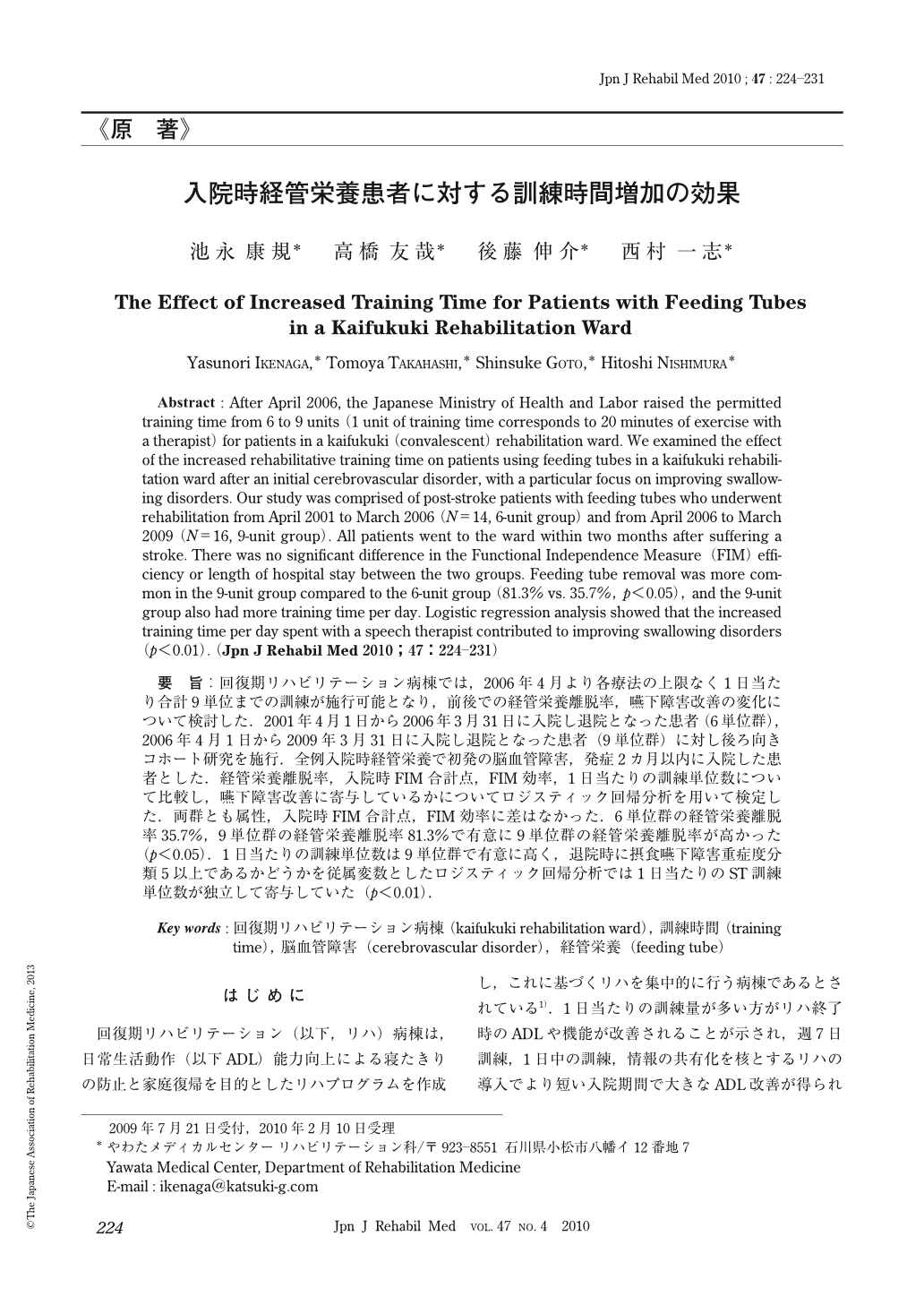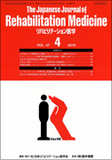Japanese
English
- 販売していません
- Abstract 文献概要
- 1ページ目 Look Inside
- 参考文献 Reference
要旨:回復期リハビリテーション病棟では,2006年4月より各療法の上限なく1日当たり合計9単位までの訓練が施行可能となり,前後での経管栄養離脱率,嚥下障害改善の変化について検討した.2001年4月1日から2006年3月31日に入院し退院となった患者(6単位群),2006年4月1日から2009年3月31日に入院し退院となった患者(9単位群)に対し後ろ向きコホート研究を施行.全例入院時経管栄養で初発の脳血管障害,発症2カ月以内に入院した患者とした.経管栄養離脱率,入院時FIM合計点,FIM効率,1日当たりの訓練単位数について比較し,嚥下障害改善に寄与しているかについてロジスティック回帰分析を用いて検定した.両群とも属性,入院時FIM合計点,FIM効率に差はなかった.6単位群の経管栄養離脱率35.7%,9単位群の経管栄養離脱率81.3%で有意に9単位群の経管栄養離脱率が高かった(p<0.05).1日当たりの訓練単位数は9単位群で有意に高く,退院時に摂食嚥下障害重症度分類5以上であるかどうかを従属変数としたロジスティック回帰分析では1日当たりのST訓練単位数が独立して寄与していた(p<0.01).
Abstract : After April 2006, the Japanese Ministry of Health and Labor raised the permitted training time from 6 to 9 units (1 unit of training time corresponds to 20 minutes of exercise with a therapist) for patients in a kaifukuki (convalescent) rehabilitation ward. We examined the effect of the increased rehabilitative training time on patients using feeding tubes in a kaifukuki rehabilitation ward after an initial cerebrovascular disorder, with a particular focus on improving swallowing disorders. Our study was comprised of post-stroke patients with feeding tubes who underwent rehabilitation from April 2001 to March 2006 (N=14, 6-unit group) and from April 2006 to March 2009 (N=16, 9-unit group). All patients went to the ward within two months after suffering a stroke. There was no significant difference in the Functional Independence Measure (FIM) efficiency or length of hospital stay between the two groups. Feeding tube removal was more common in the 9-unit group compared to the 6-unit group (81.3% vs. 35.7%, p<0.05), and the 9-unit group also had more training time per day. Logistic regression analysis showed that the increased training time per day spent with a speech therapist contributed to improving swallowing disorders (p<0.01).

Copyright © 2010, The Japanese Association of Rehabilitation Medicine. All rights reserved.


